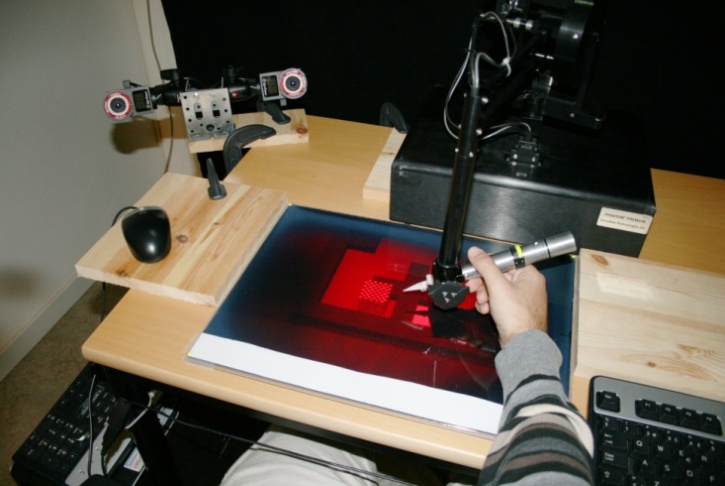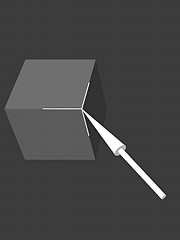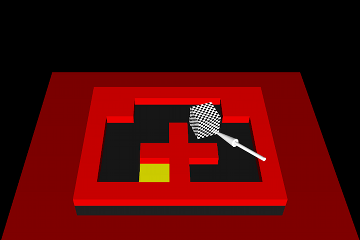Perceptual Evaluation of Co-located and Non-Colocated Haptics
Studies indicate that haptic interaction with a computer generated virtual scene may become more intuitive by aligning (co-locating) the visual and haptic workspaces so that the visual and haptic feedback coincide as they do in the real world. Co-located haptics may gain importance when more advanced haptic interfaces, such as high-fidelity whole hand devices, become available. We have investigated the pros and cons with physically co-located versus non-collocated haptics on two stereoscopic displays: the SenseGraphics 300 Display; and a holographic optical element (HOE) display.

| 
|
| (a) | (b) |
| Figure 1: Stereoscopic displays that were used in the study: (a) half-transparent mirror display from SenseGraphics AB; (b) autostereoscopic HOE display. | |
User Study
We created two accuracy tasks with spatial accuracy as the dependent variable, where the users were asked to find corners of a virtual cube and also to follow a virtual spiral with a haptic stylus. The users also performed one manipulation task with time as the dependent variable, where they were asked to move a block through a virtual labyrinth.

| 
| 
|
| (a) | (b) | (c) |
| Figure 2: Co-location experiments: (a) accuracy task: find corners of cube; (b) accuracy task: trace spiral; (c) dynamic task: push cube through labyrinth. | ||
The study shows that on both displays co-location significantly improves completion time in the manipulation task. However, the study shows that co-location does not improve the accuracy in the spatial accuracy tasks. There was also a difference in performance between the two displays. We observed significantly longer completion times on the HOE compared to the mirror display, which may be explained by conflicting depth cues, as well as visual lag in the projectors. For both the Spiral and Cube task, accuracy was significantly higher on the half-transparent mirror display. This may in part be explained by the higher resolution on the mirror display and is supported by the data from a stereo vision pre-test that showed better stereo vision performance on the half-transparent mirror display.
People
- Ingrid Carlbom, Centre for Image Analysis
- Stefan Seipel, Centre for Image Analysis
- Pontus Olsson, Centre for Image Analysis
- Fredrik Nysjö, Centre for Image Analysis

